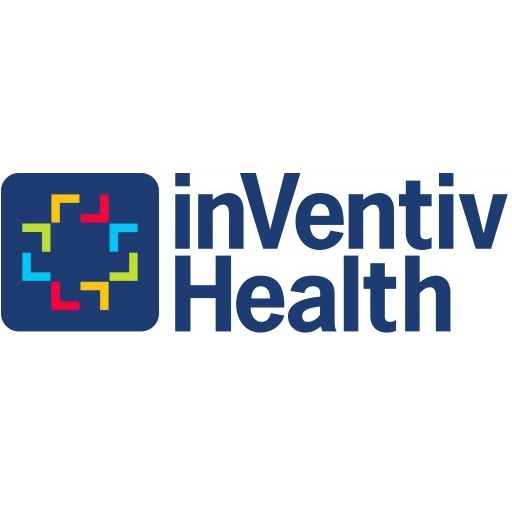inVentiv Health Communications 10 Nov 2016 // 3:38PM GMT

Readers,
We’re feeling a bit plucky this week! We report on how “big chicken” may be artificially keeping the price of poultry high. The pharma industry and ICER duked it out in the press…meanwhile, the FDA can’t get prospective hires to say “yes.” Facebook is enabling compliant, branded healthcare ads. And finally, we detail how inVentiv’s own Mike Bell was one of the few voices in a room full of industry executives who offered solutions for finding cost efficiencies in the pharmaceutical supply chain.
Don’t fly the coop before getting your dose of The Week That Was.
“BIG CHICKEN” BOOSTING PALTRY POULTRY PRICES?
It’s not just pharma dealing with pricing issues, now “big chicken” is running “afowl” of critics and even facing charges of conspiracy (we can’t make this up).The price of chickens has been a prickly topic for decades as large producers have consolidated, and the prices for pork and beef have gone down. Adding to the situation is recent scrutiny of Georgia Dock, a chicken-pricing index widely used by American grocery stores, which allegedly fudged its numbers to keep retail chicken prices artificially high. The findings reportedly show as much as a 30 to 40 cent differential from other indices like the federal Department of Agriculture…and it’s costing consumers more at the store. That’s not all. Last month, a class-action lawsuit was filed against the big chicken processors, accusing them of using a data company in a “conspiracy” to keep prices high.
OUR TAKE
Regardless of whether you are a drumstick or a wing person, no one likes to overpay. The average American consumes 90 pounds of chicken a year, so the price difference could be meaningful for households. After emerging from scandals about coop crowding, feed issues and hormone use, the poultry industry has had a relatively quiet few years. Price gouging is not a fight that Purdue and Pilgrim’s Pride want to add to their list!
ICER & INDUSTRY IN REPUTATIONAL TUSSLE
Last week, we witnessed pharmaceutical trade associations and the Institute for Clinical & Economic Review (ICER) engage in a media dust up over their efforts to undermine each other. The Wall Street Journal reported ICER founder and president Steven Pearson, is “seeing [patient] groups funded by pharma who are more vocal in criticizing us.” Yet, some patient advocates are firing back. The Global Health Living Foundation (GHLF) said in a recent report that ICER has close ties to the insurance industry. The group reports ICER received 77% of its funding in 2013 from the insurance sector and $430,000 in seed funding through insurance ties. The industry and some patients argue that ICER’s reports are used by payers to pressure drug makers to discount medicines and restrict access to some expensive drugs.
OUR TAKE
ICER appears to be taking claims about conflict of interest more seriously. Recently, it called for new voting board members with the caveat that nominees can’t be directly involved in medical policy decisions or have ties to the insurance industry. And last Friday, it addressed an ongoing complaint by instituting the use of net prices in a review of psoriasis medicines. Previously, ICER’s reviews relied upon list prices that virtually no one pays. What will the industry and patients say? Time will tell…
WHAT IS VALUE ANYWAY?
How do we measure the value of drugs? Will policymakers opt to answer that question for the industry? Those are some of the queries pharmaceutical executives, activists and think tanks pondered last week at a Summit hosted by Credit Suisse and The Capitol Forum. Leaders from Public Citizen and the Social Security Network discounted current Congressional proposals on drug pricing, saying they’re unlikely to pass. Rather, it will be the PDUFA Reauthorization Act of 2017, a “must pass” bill for the FDA to operate, which will lead to trench warfare between the industry and advocates because both sides will seek to attach policies on drug pricing. inVentiv Health CEO Mike Bell argued part of the problem is, “People can’t agree on what the definition of value is. If you go to a different part of the (healthcare) food chain, you get a different answer.” Without some consensus it is impossible to find solutions. Memorial Sloan Kettering’s Dr. Leonard Saltz added some newly launched oncology medicines statistically show life extending qualities, but “statistically significant” can sometimes mean a couple days of life for a drug costing tens of thousands.
OUR TAKE
As Bell and Saltz allude, future medicines must show meaningful results both in terms of patient and societal outcomes. According to Bell, companies like inVentiv are moving to consider health-economic implications needed for commercialization in clinical development so that new medicines are not just “approvable” – but seen as value by payers. Finding efficiencies in the clinical and commercialization process can also save time and funds that can be passed into the healthcare system.
FDA NEEDS HIRING HELP
Yes readers, the U.S. Food and Drug Administration, the agency in charge of reviewing new drug applications, has more than 700 job vacancies. This equals about 1 out of 8 positions…hardly a comforting thought. The FDA cites several hurdles competing for top talent, including: lower salaries than the private sector, requirements that new hires must divest certain stock holdings, and a government hiring process so slow that candidates often take other offers while the government system grinds on.
OUR TAKE
Any reforms to reduce drug prices, such as more generic and competitive approvals, collapses without the manpower to execute it. The FDA’s hiring gap can translate into slower approval for new medicines, and patients are left bereft of alternative routes to meet their needs.
FACEBOOK SAYS HELLO TO PHARMA AD DOLLARS
Facebook rolled out a new product this week that makes it easier for pharma brands to advertise on the platform. Bayer’s multiple sclerosis drug Betaseron was the first to roll out an ad in the new format, featuring scrolling Important Safety Information (ISI). While the scrolling ISI has been a standard feature in banner ads for years, this marks the first time Facebook has employed the technology and signals a new effort to accommodate the regulatory needs of pharma marketers.
OUR TAKE
Due to regulatory concerns around safety information and open commenting, many pharma companies have stuck to unbranded campaigns on Facebook. But now that Facebook is able to accommodate ISI, get ready for an increase in branded healthcare ad dollars moving to the platform. However, compliant engagement doesn’t change the need for biopharmas to monitor and report any adverse events reported online.
Until next week,
– The Issues Management Practice @inVentiv Health PR


































.jpg)












